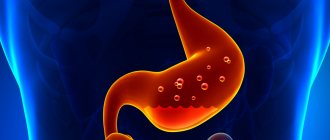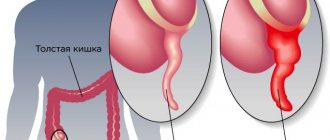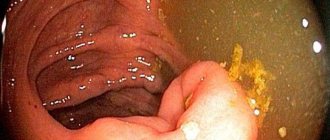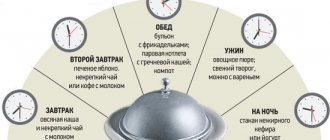Appendicitis is a disease that manifests itself in the form of an inflammatory process that is localized in the appendix of the cecum - in the appendix. This disease is widespread in Russia. Appendicitis is one of the most common abdominal diseases. The only solution to this problem is surgery. The advanced form of the disease is dangerous due to the threat of rupture of the appendix, which can cause the death of the patient. What are the causes of appendicitis?
What is appendicitis
Appendicitis can only be treated with surgery
Appendicitis is one of those diseases for which the most common treatment is surgery. Removing the inflamed appendage of the cecum is the only way to get rid of appendicitis, as well as to avoid possible complications of this disease. It is precisely because of the need for surgical intervention, despite the simplicity of the operation, that the disease is considered one of the most unpleasant.
No one is protected from appendicitis. It can happen in both adults and children - both women and men are equally at risk from this disease. Acute appendicitis can appear suddenly: there are many possible reasons for its formation, and among them we can highlight those that occur most often.
To understand exactly what factors cause the development of appendicitis, you should have an idea of what the appendix is and what functions it has. This process is small in size - it can reach up to ten centimeters in length. It represents something like a border that separates the large intestine from the small intestine. The appendix plays a large, but not vital, role in the formation of intestinal immunity: the appendix itself consists of lymphoid tissue and is a reliable repository for beneficial bacteria.
Due to the fact that the appendix is normally protected from food from the intestines, it retains the original microflora of the large intestine. Therefore, people who have suffered from abdominal diseases, the treatment of which consisted of taking antibiotics, thanks to the appendix, quickly restore the beneficial intestinal microflora.
Despite the fact that the appendage of the cecum has a fairly significant role, the development of medicine allows people with a removed appendix, if necessary, to compensate for the functions of the appendix with the help of special medications. Therefore, the appendix is not of great vital importance for the human body, which allows it to be treated in the only available way - surgery.
Inflammation of the appendix, which performs the protective functions of the immune system, is called appendicitis. The only way to treat this disease is surgery, during which the process is removed.
Appendicitis is an acute inflammation of the inner lining of the appendix. It is the most common cause of acute surgical interventions and most often occurs between 10 and 30 years of age.
The pain usually starts in the center of the abdomen, then moves down to the lower right side. As a rule, it intensifies within 12-18 hours and becomes very pronounced.
Treatment for appendicitis involves immediate surgical removal of the appendix. Without surgery, it leads to serious complications.
Synonyms Russian
Inflammation of the appendix.
English synonyms
Appendicitis.
Symptoms
- Aching pain in the abdomen that begins in the navel area and then usually moves to the lower right side of the abdomen.
- Short-term nausea, vomiting.
- Loss of appetite, constipation.
- Abdominal pain that gets worse over several hours.
- Acute pain in the lower right part of the abdomen, which occurs when pressure suddenly decreases during palpation.
- Abdominal pain, aggravated by coughing, walking, or sudden movements.
- Pain in the lower right abdomen when palpated.
- Increase in body temperature to 37.7-38.3 °C.
- In children under 3 years of age, behavior changes and refusal to eat, as well as diarrhea and vomiting.
- In elderly patients, symptoms may not be expressed.
The difficulty lies in the fact that typical symptoms are characteristic of only 50% of patients. Sometimes abdominal pain may be absent, not localized to the right side, etc. Atypical symptoms are usually observed in older people and pregnant women.
General information about the disease
Appendicitis is an acute inflammation of the inner lining of the appendix - the vermiform appendix of the cecum (the cecum is the initial section of the large intestine in the lower right part of the abdomen; the appendix is a small appendix of the cecum, the function of which in the body has not yet been precisely established). It is the most common cause of acute surgical interventions and most often occurs between 10 and 30 years of age.
Inflammation of the appendix is caused by its blockage, which may be associated with increased pressure in the intestinal lumen. This may happen due to:
- lymphoid hyperplasia - an increase in lymphoid tissue located fragmentarily along the intestinal wall;
- fecal stones (fragments of hardened feces);
- parasites;
- foreign bodies, tumors.
The blockage leads to expansion of the process and infection. As a result, the outflow of venous blood from the appendix is disrupted, which causes oxygen starvation of its tissues.
Also, in some cases, appendicitis is a consequence of inflammatory or infectious bowel diseases.
The following types of appendicitis are distinguished.
- Catarrhal (simple). It occurs most easily and is characterized by minimal inflammation of the appendix. In this case, suppuration does not occur.
- Phlegmonous. The appendix ulcerates, becomes inflamed and suppurates.
- Gangrenous. It is a consequence of thrombosis of the vessels feeding the appendix, resulting in tissue necrosis, which leads to peritonitis - inflammation of the peritoneum (the membrane covering all organs of the abdominal cavity). This type of appendicitis is extremely dangerous.
- Perforated. When it occurs, suppuration of the appendix occurs, followed by melting of the tissues, a hole is formed in the appendix and its contents enter the abdominal cavity. This causes inflammation of the peritoneum, which is accompanied by systemic inflammation of the entire body. Accompanied by severe pain.
The appendix may be located in an atypical location: behind the cecum, in the pelvis, close to the liver. In this case, the symptoms will differ significantly from the classic ones and resemble the signs of other diseases. Making a diagnosis with an atypical location of the appendix can be difficult. In addition, the position of the appendix changes during pregnancy, which can also complicate diagnosis.
Appendicitis can lead to the following complications.
- Appendicular infiltrate is a formation consisting of the cecum, appendix, loops of the large intestine and omentum. It is formed at the location of the appendix on the 3-5th day from the onset of acute appendicitis and usually resolves on its own within a month. In some cases, it may suppurate with the formation of a periappendiceal abscess.
- Peritonitis is an inflammation of the peritoneum, the membrane that covers all organs of the abdominal cavity from the outside.
- Periappendicular abscess is a purulent inflammation of tissues, their melting and the formation of a purulent cavity. The appearance of an abscess requires its surgical removal.
Who is at risk?
- People aged 10-30 years.
- Suffering from inflammatory bowel disease.
- Suffering from parasitic intestinal diseases.
- Pregnant women.
Diagnostics
If classic symptoms are present, the diagnosis of appendicitis is usually not in doubt. In case of atypical or erased symptoms, additional research is required to diagnose it.
Laboratory research
- Complete blood count (without leukocyte formula and ESR). In 80-85% of patients with appendicitis, the level of white blood cells increases. At the same time, their normal number does not exclude the presence of appendicitis. Since during pregnancy there is a physiological increase in the level of leukocytes, a general blood test in this case does not help in diagnosing the disease.
- Leukocyte formula. Determines the ratio of different types of leukocytes as a percentage. With appendicitis, a significant predominance of neutrophilic leukocytes can be observed.
- C-reactive protein. It is a protein produced in the liver that quickly responds to active inflammation. A normal CRP level practically excludes the diagnosis of appendicitis, but an increase in its level is not specific for appendicitis. The test is especially reliable in combination with determining the level of leukocytes.
- General urine analysis. This is done to rule out urinary tract infections and kidney stones.
- Determination of hCG level. The study is prescribed to women to exclude ectopic pregnancy.
To exclude diseases of the liver and pancreas, the following tests are performed:
- aspartate aminotransferase (AST), alanine aminotransferase (ALT), total alkaline phosphatase (ALP) are liver enzymes that are normally located inside hepatocytes. With liver diseases, their level in the blood increases.
- amylase, lipase - an increase in the level of these indicators in the blood may indicate inflammation of the pancreas.
Other research methods
- Ultrasound (US) or computed tomography (CT) of the abdominal cavity. They allow you to evaluate the condition of the appendix and confirm appendicitis or detect other causes of abdominal pain.
- Laparoscopy. A method in which the examination of internal organs is performed through small holes in the abdominal wall using special equipment. In some cases, especially in women with mild pain in the lower abdomen, only laparoscopy can make an accurate diagnosis.
Treatment
Treatment for appendicitis involves immediate removal of the inflamed appendix. Currently, the mortality rate for appendicitis does not exceed 1%. If treatment is delayed, the risk of death increases.
In most cases, surgery can be performed in a low-traumatic manner through a small incision in the right lower abdomen. Antibiotics are recommended before surgery. In case of purulent complications, the scope of the operation can be expanded.
After appendix removal, the following safety precautions should be followed for several weeks to speed up healing:
- avoid physical activity, support your stomach (with your hand) when coughing and laughing so that the stitches do not come apart;
- activity should be increased gradually.
Prevention
There are currently no preventive measures for appendicitis.
Recommended tests
- General blood analysis
- Leukocyte formula
- C-reactive protein, quantitative (highly sensitive method)
- General urine analysis
- Beta subunit of human chorionic gonadotropin (beta-hCG free)
- Aspartate aminotransferase (AST)
- Alanine aminotransferase (ALT)
- Total alkaline phosphatase
- Total bilirubin
- Serum total amylase
- Lipase
Literature
- Dan L. Longo, Dennis L. Kasper, J. Larry Jameson, Anthony S. Fauci, Harrison's principles of internal medicine (18th ed.). New York: McGraw-Hill Medical Publishing Division, 2011.
Reasons for the development of pathology
There are several causes of appendicitis
Although appendicitis is a disease that is fairly easy to treat, the exact cause of its occurrence is currently unknown. There are several main factors that can cause the development of appendicitis:
- mechanical
- vascular
- infectious
- immunological
- endocrine
Each of these factors must be considered separately.
Mechanical factor
It manifests itself in the form of blockage of the appendix, due to which the development of appendicitis begins. Obstruction of the appendix leads to the fact that the microflora it contains cannot leave the appendix, resulting in the development of an inflammatory process. Blockage of the appendix can be caused by:
Establishing diagnosis
Diagnosis of appendicitis in children is complicated due to the similarity of symptoms with other diseases (gastroenteritis, Meckel's diverticulum, intussusception, Crohn's disease). Often children do not present typical complaints and characteristic symptoms are not detected during examination, especially when the appendix is in an unusual position.
To diagnose appendicitis, the following is carried out:
- physical examination to assess pain;
- blood test: used to confirm infection (with appendicitis, there is an increase in white blood cell levels);
- Urinalysis: used to rule out other causes of infection;
- X-ray of the abdominal cavity: allows you to detect the presence of fluid in the abdominal cavity and bloating;
- Ultrasound of the pelvic organs: shows an inflamed appendix or the presence of fluid in the abdominal cavity;
- CT (computed tomography): a reliable method for confirming appendicitis, widely used in doubtful cases.
Early diagnosis guarantees timely treatment and eliminates the risk of developing peritonitis and numerous complications.
Omicron: epidemiology
The infection is transmitted by airborne droplets, airborne dust and contact. You can become infected with omicron by talking, in an unventilated room, or by eating unheated foods that the sick person has interacted with.
Experts emphasize that for omicron infection, dry particles of the virus are sufficient, and not just microdroplets released during sneezing and coughing. This indicates an increasing need for antiseptic treatment of work surfaces.
The incubation period (the time elapsed from contact with a carrier of infection until the appearance of the first symptoms of the disease) may differ depending on age, concomitant diseases, level of immunity, the number of viral particles that have penetrated the body, but on average it ranges from 1 to 3 days (versus 5 - 7 days with delta).
What will happen in the hospital.
In the emergency room, the child will have an ultrasound and will be examined by a surgeon. If the appendix is inflamed, and tests confirm this, if you have not fed or watered the child for at least 3.5 hours, he will be immediately taken to the operating room. There, using laparoscopy (these are 3 small punctures), the inflamed appendix will be removed through a small hole and a healthy baby will be returned to you, completely free of appendicitis. After 4 hours he will be able to get up and drink water, but all this is only if you have time before the complications begin. If for some reason laparoscopic surgery is not possible, abdominal surgery will be performed and the recovery period will take longer.
Particular symptoms of appendicitis in women
Any attending physician can tell exactly where appendicitis is located and its symptoms in women. With the right approach to diagnosis, this inflammation can be recognized even in its inception stage by:
- bloating caused by obstruction of the digestive tract;
- white or yellow coating on the tongue;
- unpleasant pulling sensations in the right side;
- loss of appetite;
- dry mouth;
- general malaise;
- rapid heartbeat;
- high blood pressure;
- pain in joints and bones.
How clearly you will experience the symptoms and signs of appendicitis depends on the degree of inflammation and the general condition of the body. In some cases, people may experience seizures and loss of consciousness. Manifestations of appendicitis of infectious origin develop most quickly.
Disease prevention
There is no way to prevent appendicitis. But there are several recommendations that may reduce the risk of developing a pathological condition:
- Include fiber-rich foods (fruits, vegetables and whole grains) in your diet. This will improve the digestive process.
- During the treatment process and especially in the initial stages, it is important to take antibiotics. Antibacterial drugs prevent the proliferation of microorganisms in the digestive tract, preventing the exacerbation of the disease.
If symptoms of appendicitis appear in a child, it is recommended to show the child to a doctor as soon as possible. This approach eliminates the likelihood of developing serious complications.
Stages and symptoms of female appendicitis
The severity of appendicitis symptoms depends on what stage it is in. Remember, the sooner you can diagnose this inflammation, the sooner you can take action and begin treatment. It is strictly forbidden to ignore the manifestations of the disease, so as not to provoke the development of serious complications.
| Stage | Term | Signs |
| Catarrhal | First half of the day | Increasing pain in the middle of the abdomen, which flows to the right side |
| Phlegmonous | 18 to 24 hours | Severe pain, vomiting, high body temperature |
| Gangrenous | Second or third day | Feeling of relief, appearance of symptoms of intoxication |
| Performative | End of the third day | Rupture of the appendix, fever up to 40 degrees, loss of consciousness. |
Complications of Omicron
People infected with the Omicron variant are less likely than those infected with other variants to require specialized medical care from an intensive care team, however, it cannot be said whether this is due to the mild course of the infection in vaccinated people or the lesser danger of the Omicron variant as such. Experts also report that with Omicron, disorders of the blood coagulation system are much less common. With omicron, the likelihood of bronchitis and bronchiolitis (inflammation of the bronchioles) is higher than pneumonitis, bronchitis and bronchiolitis are easier.
Omicron treatment
During different periods of the pandemic, recommendations for the treatment of coronavirus infection have undergone a number of changes. The treatment regimen for Omicron differs depending on the age group and general health of the patient, the severity of the pathological process, and the risk of complications. In a global sense, it is expected that the number of hospitalizations will decrease and, as a result, the main burden will shift from hospitals to outpatient care.
Patients should remember that it is absolutely forbidden to self-medicate: take antibiotics and thrombolytic drugs. Viruses are immune to antibiotics
, uncontrolled use of these drugs will lead to an imbalance of microflora, a decrease in the body’s protective reserves and progression of the disease. Even with more aggressive options, the decision to prescribe antibiotics is made by the doctor, only in the case of proven bacterial complications and taking into account the sensitivity of the bacterial flora. Anticoagulants can cause or worsen existing anemia and thrombocytopenia, lead to palpitations and internal bleeding, therefore they can also be taken only as prescribed by a doctor and when monitoring a coagulogram (a study that evaluates the state of the blood coagulation system).
What then is the treatment?
The patient has access to traditional treatment methods: drinking plenty of fluids, taking vitamins C, D, B vitamins and magnesium, symptomatic therapy: taking ibuprofen or paracetamol at a temperature of 380C. Often, therapists recommend antiviral drugs (for example, influenza). If the temperature is 380C or higher for more than three days, you should consult a doctor.
Signs of acute appendicitis in women
In 30% of cases, symptoms of appendicitis occur suddenly. In such cases, the woman should immediately call an ambulance and go to the hospital. This will help her minimize the risk of complications and even death. You should not endure the pain or suppress it with painkillers - this will only make it worse. You can recognize the acute form of appendicitis by:
- changes and confusion of consciousness;
- vomiting, after which relief does not occur;
- soreness that is wavy in nature;
- abdominal wall tension;
- a sharp increase in body temperature.
If several signs appear at once, the treating specialist should immediately examine you and conduct detailed palpation. If there is any suspicion of such a dangerous disease, you should be immediately taken to the surgical table.
How to recognize appendicitis at 4-7 years of age and older
At this age, children can usually clearly show where it hurts. If the child has a typical location of the appendix - in the right iliac region - he will clearly show you the place where it hurts. It will be much more difficult for a child whose appendix is hidden in the left half of the abdomen, under the liver and closer to the kidneys - behind the peritoneum; in this case, the child will point to other areas of the abdomen. But if these pains are accompanied by vomiting and/or stool disturbances, and the temperature rises to 38.5-39, the likelihood of appendicitis is high. At this age, when the appendix is inflamed, children also remain in a lying position on their left side with their legs tucked in, lose their appetite and do not want entertainment. Approach the child every half hour and stroke the belly, lightly pressing it in the lower half on the left and right. If the pain intensifies over time, you must call an ambulance.









